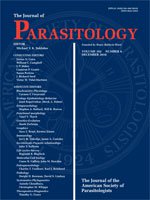California has more reported human raccoon roundworm cases than any other state due to large and overlapping human and raccoon populations. Infection by this parasite, Baylisascaris procyonis, is relatively benign in raccoons but can cause severe pathology in other species. Disease risk is driven by environmental egg contamination which increases with raccoon density, worm intensity, and worm prevalence. To improve knowledge about risk to humans and other species, 189 raccoons from southern California were examined to investigate how host age and season affect worm abundance, demography, and fecundity. Adult worms were present in animals as young as 10 wk and 100% of 4-mo-old raccoons were infected. Although 80% of sampled raccoons hosted adult B. procyonis, prevalence and abundance were lower in older animals. There were more worms in juvenile than in adult raccoons, resulting in a convex age-intensity profile. Coupled with raccoon demography, this drove fall peaks in parasite abundance and egg production. Eggs per-gram feces averaged 4,606 ± 661 (SE), and this output increased with worm intensity, with no evidence that crowding reduced parasite size or fecundity. High parasite egg outputs from hosts in this California raccoon population increase human exposure risk, and this risk could be reduced by management strategies that target heavily infected juvenile raccoons.
How to translate text using browser tools
1 December 2016
Baylisascaris procyonis Demography and Egg Production in a California Raccoon Population
S. B. Weinstein
ACCESS THE FULL ARTICLE

Journal of Parasitology
Vol. 102 • No. 6
December 2016
Vol. 102 • No. 6
December 2016




